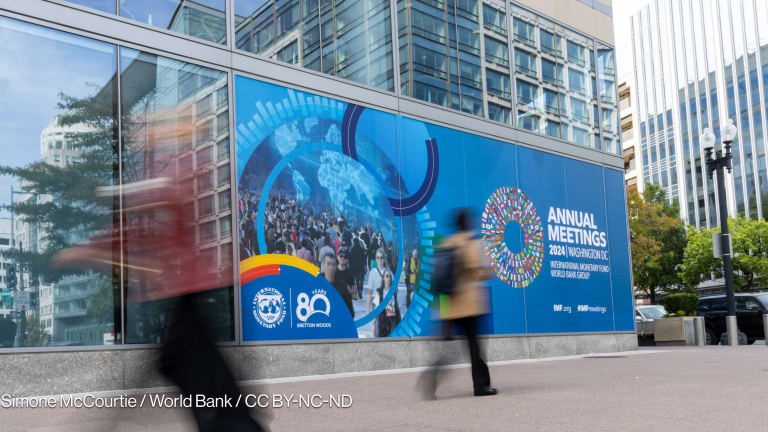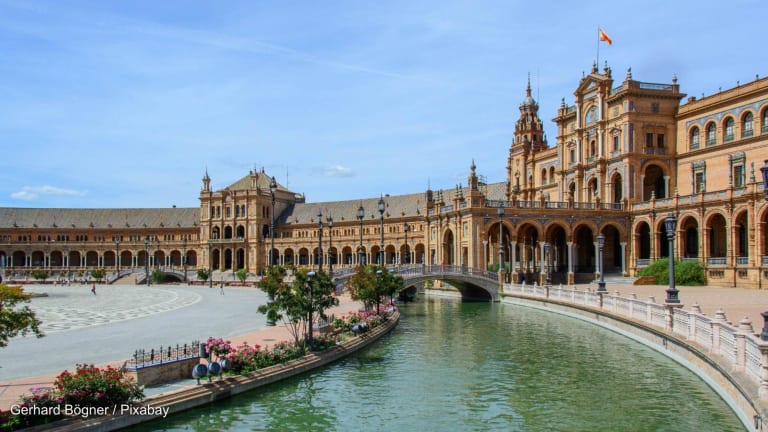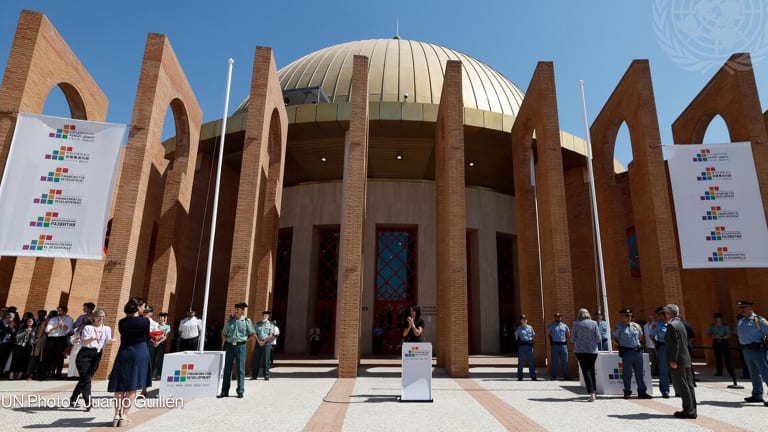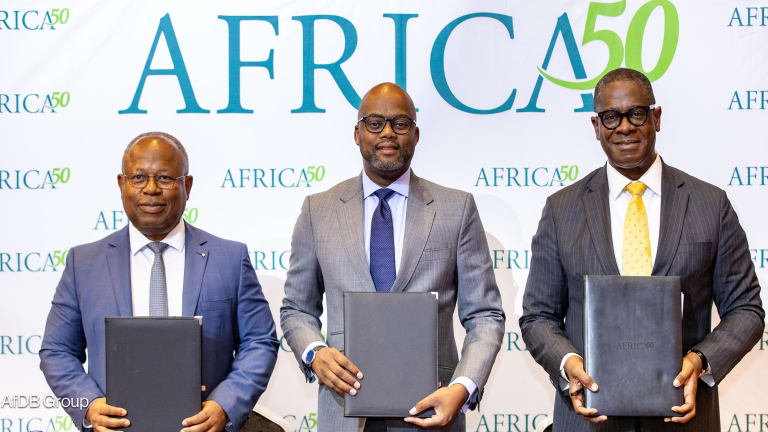6 months after SDR allocation, can the assets work for development?
Low-income nations got just $21 billion from IMF's $650 billion allocation of Special Drawing Rights. How can wealthy nations rechannel these assets to work for development? A two-day forum offered some ideas, but there's not a simple path ahead.
Just what to do with Special Drawing Rights has been one of the more vexing issues in the effort to boost support to vulnerable countries during the COVID-19 pandemic. Even after the International Monetary Fund’s historic issuance of $650 billion worth of SDRs in August, many questions remain around how to effectively utilize the resource. The issuance heavily favored wealthy countries, because the allocation was based on shareholding power at IMF. “Low-income developing countries” — a grouping of about 60 nations with per capita income below $2,700 — were awarded only $21 billion out of the pot. Since then, the world has been grappling with how to reallocate the resources from the rich to the vulnerable. The task is proving complex in part because SDRs are not cash; they are a form of reserve asset, meaning they are used to stabilize currencies and for external financing of payments. This makes simply funneling SDRs through existing institutions, such as multilateral development banks, a challenge. One difficulty is the need to “preserve the so-called reserve asset characteristic of the SDR,” said Mark Plant, a co-director of development finance at the Center for Global Development. His organization recently hosted a two-day seminar that explored the avenues available for reallocation. The issue is taking on added urgency because the risk of sovereign defaults is rising. Many lower- and middle-income countries have also exhausted their fiscal firepower in the first years of the pandemic and are in need of additional resources, such as the SDRs, to bolster their economies. Good but limited Despite the skewed nature of the allocation, Ghanaian central bank Governor Ernest Addison said the nearly $1 billion in SDRs disbursed to his country was beneficial. “It was a useful initiative. It has helped us … strengthen our reserves … [and have] more fiscal policy space,” he said during the CGD event. About one-third of Ghana’s share went to budget support for the central government. One of the nice things about the SDRs, he said, was that they were unconditional — meaning countries were free to use them as they saw fit. Amadou Hott, the economy minister of Senegal, is also a fan of the lack of conditionalities, which also meant his government didn’t have the pressure of a timetable for spending. He is among those pushing for a faster reallocation from wealthy countries to lower-income nations. He said one way to do this effectively would be to channel the resources through the multilateral development banks, which can focus on development projects, including ones that directly create jobs and growth. “There must be … support [for] entrepreneurship … [and] economic activity,” he said during the event. “Youth and women are expecting some kind of support.” According to IMF, Senegal has already allocated some of its SDRs to vaccine production projects, which it hopes will be an economic driver, in addition to ensuring that African countries are more self-reliant in the future. Experts are trying to gather data on how SDRs have been used, in part to track the efficacy of allocations. “MDBs [are] the perfect conduit for channeling SDR resources to developing countries and vulnerable economies.” --— Bajabulile Tshabalala, senior vice president, AfDB The Center for Economic and Policy Research has attempted to follow how the assets have been used since the August allocation. According to its findings, 80 countries in the developing world have utilized SDRs, with about half using the assets for fiscal support, worth about $37.3 billion. Some were exchanged for hard currency, amounting to around $11.6 billion. Oxfam International, which also tracks how countries are using the SDRs, has lamented the difficulty in following the data. “Our country teams are having to dig through central banks’ balance sheets … [to see] how they are being used,” said Nadia Daar, the head of Oxfam’s Washington office. IMF says it will release better data in a report likely to come out in a year. In the meantime, the institution’s regular evaluations of countries, known as Article IV consultations, now include an SDR component, according to Craig Beaumont, a deputy director in IMF’s finance department. That means more information will be coming out on a country-by-country basis. How to reallocate One existing mechanism for getting SDRs to those in dire need of support would be using the assets to recapitalize the Poverty Reduction and Growth Trust, an IMF fund that offers low-cost loans to the lowest-income nations. IMF is pushing member states to use this avenue for some fraction of their excess SDRs. Currently, PRGT financing is interest-free. The downside is that the scope is limited to a narrow range of countries that can access the fund. For now, the main tool for the reallocation of the SDRs from rich to vulnerable nations — the proposed Resilience and Sustainability Trust — does not yet exist, but IMF’s board might vote to make it a reality by the time of the Spring Meetings in April. The $50 billion trust would be the in-house mechanism for IMF to move around the assets. Importantly, the trust would be open to about two-thirds of member states, with concessional lending terms. Financing would be available for a range of issues, including climate change. However, the trust would not fund many types of development projects, such as those typically supported by the World Bank and its peers. Hott, a former investment banker, said that financing development would be a priority for Senegal. “It cannot only be cheaper financing; it has to help us finance additional projects,” he said. This brings back the question of how to get development banks involved, with European countries in particular bound to face significant legal hurdles. “The direct financing of multilateral development banks by national central banks of EU Member States through SDR channelling is not compatible with the monetary financing prohibition,” said European Central Bank President Christine Lagarde during a speech in October, referring to rules on central banks funding governments. Lagarde, a former IMF chief, said that such financing would not ensure the claims on the reserves are “highly liquid and of high credit quality.” Sylvie Goulard, a lawyer at Banque de France, told the CGD forum that European institutions are facing “some constraints.” “I don't want to minimize the fact that we have some legal issues we need to discuss,” she said. The topic is on the agenda for the European Union-African Union summit this week. At the same event, African nations are likely to push for an SDR reallocation to be kept separate from overseas development aid calculations, so that regular assistance flows are not disrupted. Wealthy nations have failed so far to deliver on a promised $100 billion for climate finance, leaving lower-income countries wary that words could again not be turned into action in a timely manner. France, for example, has floated a plan that a similar $100 billion worth of the SDRs could eventually be reallocated. The African Development Bank has argued that a deal can be reached, though it may take time to finesse the details on ensuring the SDR reserve status and the liquidity required. “MDBs [are] the perfect conduit for channeling SDR resources to developing countries and vulnerable economies … in a manner that will satisfy the high expectations for accountability of countries making available these SDRs,” said Bajabulile Tshabalala, an AfDB senior vice president, during the CGD event. The idea got backing from Dody Budi Waluyo, deputy governor at Bank Indonesia, who said MDBs are already prescribed SDR holders. This could be a way to solve the roadblock. Indonesia is a key player this year, as it chairs the G-20 — the group of nations in which key decisions on the SDRs will likely be made. The group’s finance ministers and central bank governors are meeting this week. A summit of G-20 leaders is due to take place toward the end of the year in Bali.
Just what to do with Special Drawing Rights has been one of the more vexing issues in the effort to boost support to vulnerable countries during the COVID-19 pandemic. Even after the International Monetary Fund’s historic issuance of $650 billion worth of SDRs in August, many questions remain around how to effectively utilize the resource.
The issuance heavily favored wealthy countries, because the allocation was based on shareholding power at IMF. “Low-income developing countries” — a grouping of about 60 nations with per capita income below $2,700 — were awarded only $21 billion out of the pot.
Since then, the world has been grappling with how to reallocate the resources from the rich to the vulnerable. The task is proving complex in part because SDRs are not cash; they are a form of reserve asset, meaning they are used to stabilize currencies and for external financing of payments. This makes simply funneling SDRs through existing institutions, such as multilateral development banks, a challenge.
This story is forDevex Promembers
Unlock this story now with a 15-day free trial of Devex Pro.
With a Devex Pro subscription you'll get access to deeper analysis and exclusive insights from our reporters and analysts.
Start my free trialRequest a group subscription Printing articles to share with others is a breach of our terms and conditions and copyright policy. Please use the sharing options on the left side of the article. Devex Pro members may share up to 10 articles per month using the Pro share tool ( ).
Shabtai Gold is a Senior Reporter based in Washington. He covers multilateral development banks, with a focus on the World Bank, along with trends in development finance. Prior to Devex, he worked for the German Press Agency, dpa, for more than a decade, with stints in Africa, Europe, and the Middle East, before relocating to Washington to cover politics and business.








